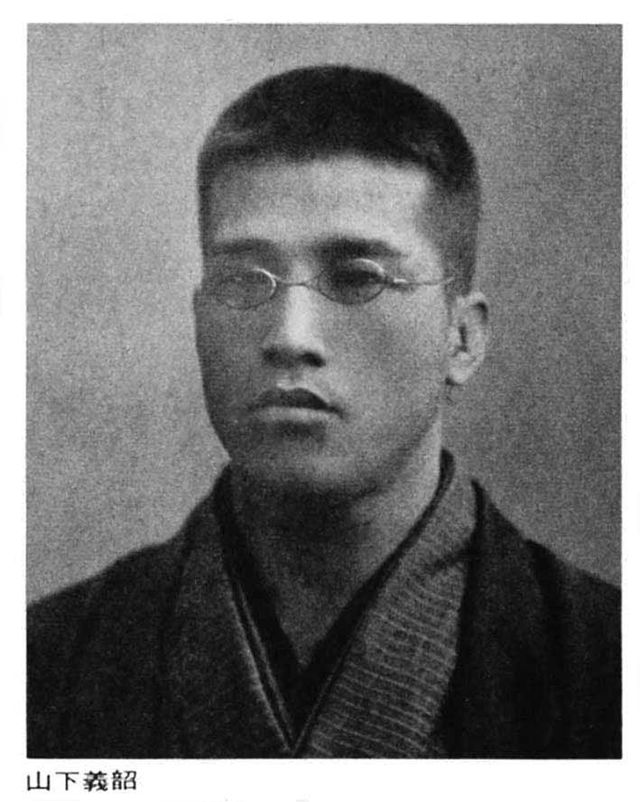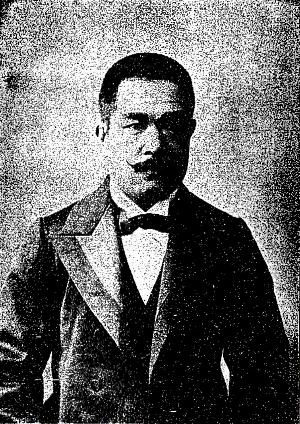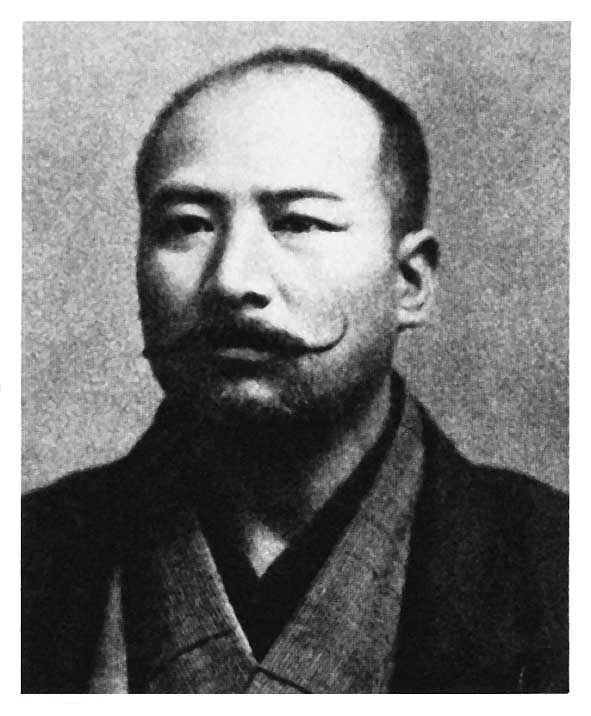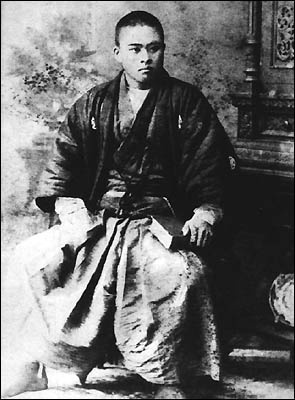History
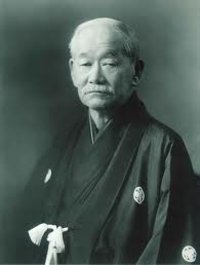
The History of Judo
Judo was founded by Dr. Jigro Kano in 1882. Kano was born in 1860 and at the age of 18 enrolled in the Tenjin Shinyo ryu school of Ju-Jitsu. The Tenjin Shinyo ryu was a soft martial art that stressed harmony as opposed to combat, but also included striking and grappling techniques. 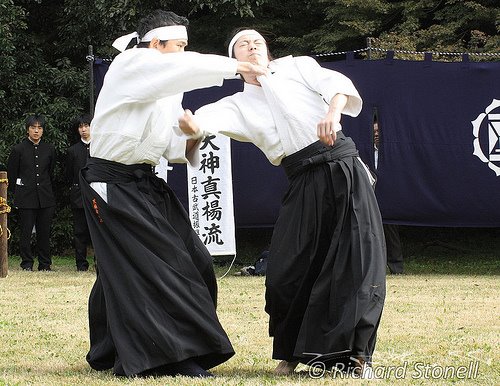
Kano transferred to the Kito ryu which offered an even softer form of Ju-Jitsu. Kano then began to study of other forms of Ju-Jitsu which caused him to revisit the Ju-Jitsu techniques he had learned. Students were often getting injured while practicing many of the techniques and Kano wanted to form a martial art that was more gentle.

In developing Judo, Kano removed all of the Ju-Jitsu techniques that were dangerous when attempted. In 1882 he founded the Kodokan Judo Institute in Tokyo and it is still the international authority for Judo. Kano emphasized the educational value of training in attack and defense and changed training methods so that most of the moves could be done with full force to create a decisive victory without injury.
Judo's popularity increased dramatically in 1886 after a contest hosted by the Tokyo police. The Judo team defeated the most well-known Jujutsu school of the time. Judo went on to become a part of the Japanese physical education system and continued its growth around the world. The ultimate goal of Judo is to perfect the individual so that he could be of value to society, "a training for life." Kano felt Judo to be a holistic art, used not only to improve physical health but also mental, emotional and spiritual health.
The U.S.'s Introduction to Judo
The United States' first introduction to Judo was in the late 1800's. In 1904 Yoshiaki Yamashita, one of Kano's students traveled to the US and taught Judo to Theodore Roosevelt and West Point cadets. But it wasn't until after World War II that American Judo began developing. Many American servicemen studied the art while in Japan and then taught it when the arrived back in the states. As a result the Armed Forces Judo Association (AFJA) was then established. 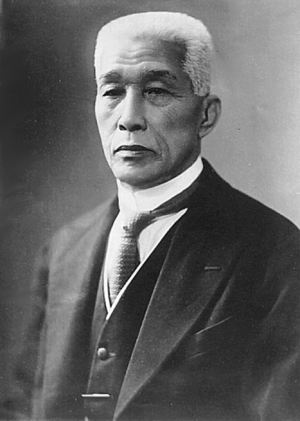
Though Kano discouraged competition, the first world championship competition was held in 1956. In 1964 men's Judo competition became a part of the Olympics. In 1992 Judo competition for women was added to the Olympics.
In his lifetime, Kano attained a doctorate degree in Judo, which is equivalent to the twelfth dan, awarded to the originator of Judo only. Kano is often called the "Father of Japanese Sports" due to his continuous work to ensure the development of athletics in Japan.
In the early 1950's General Curtis Lamay required Judo be taught to US Air Force personnel in the Strategic Air Command. In 1953 Judo was officially recognized as an AAU sport and national tournaments have been held since. The Judo Black Belt Federation became one of the major governing bodies for Judo in the US until 1954 when the United States Judo Association broke off from it. In 1962 the International Judo Federation was formed and became the governing body for Judo internationally. In the United States, the US Judo Incorporated is the governing body for Judo, along with member organizations USJA and USJF.
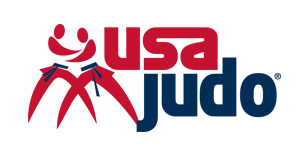
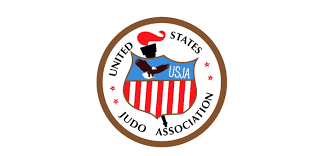

History of JuJitsu, Part I
by Dennis Helm, Godan.
THE RISE AND FALL OF JUJITSU BEFORE THE IMPERIAL ORDINANCE OF 1871
Under the Feudal System of Japan, several military arts flourished among the samurai class. Examples of these arts are archery, fencing, horsemanship, the use of spears, the Katana – sword of the Samurai – and other weapons. All of these forms were more or less familiar to the people of most European nations. Virtually all of the martial arts have been practiced in the Western World with an excellence equal to the Japanese, although their forms and methods were not quite the same as those practiced in Japan. The skill of gaining victory by yielding to the opponent’s strength appears to be an art peculiar to Japan: no similar art form has ever been known or practiced in any European country.
Although the origin of Jujitsu is not clear, and no fixed date of its first appearance can be ascertained, there is no doubt that it is a purely Japanese art. Further, it has not been derived from ancient Chinese Martial Arts as some scholars of the martial arts have proposed. It has been a common belief of various researchers that a Chinese priest named Chin Genpin brought the art of Kempo, "kicking and striking", to Japan around 1659. In 1659, Chin Genpin became a naturalized Japanese subject and died in 1671.
While engaged in the practice of Jujitsu at the Kokushij Temple in Tokyo, he taught three ronin (out of work samurai) named Fukuno, Isogai, and Miura. After extensive development of their skills, they founded three different Jujitsu Ryu independently of one another. It is not possible that Chin Genpin first introduced Jujitsu into Japan, because Chinese Kempo – which may have been brought over by him – is quite different from Japanese Jujitsu, and because some arts resembling Jujitsu can be traced back to before the time of Chin Genpin in Japan.
Evidence that Jujitsu prevailed in Japan in ancient times is indicated by an incident, which occurred in 24 B. C., when the Emperor Suinin ordered two strong men named Sukune and Kuehaya to wrestle in his presence. This struggle to test the strength and courage of the two ancient giants consisted mainly of kicking, hitting, and gouging with Sukune gaining advantage of his opponent by breaking his ribs, after which he "trampled" upon his loins and back until Kuehaya was fatally injured. Although this incident is generally cited as being the origin of wrestling in Japan, it would seem that it was actually more in the nature of Jujitsu in view of the fact that Kuehaya was kicked and gouged to death.
Sumo wrestling is the national sport of Japan, but it is not the only nationalistic sport derived from the ancient court wrestling of the Nara emperors. When wrestling was banned by edict in 1175 A. D., an atmosphere fostering creative development of all types of hand –to-hand fighting arts was started under the influence of the military. This developmental period lasted several centuries and continued even after the Portuguese explorers arrived in 1543. Ultimately, no less than 725 official documented systems of Jujitsu were developed all of which concentrated on situations in which no "major" weapons were involved. All together, these systems were called Jujitsu.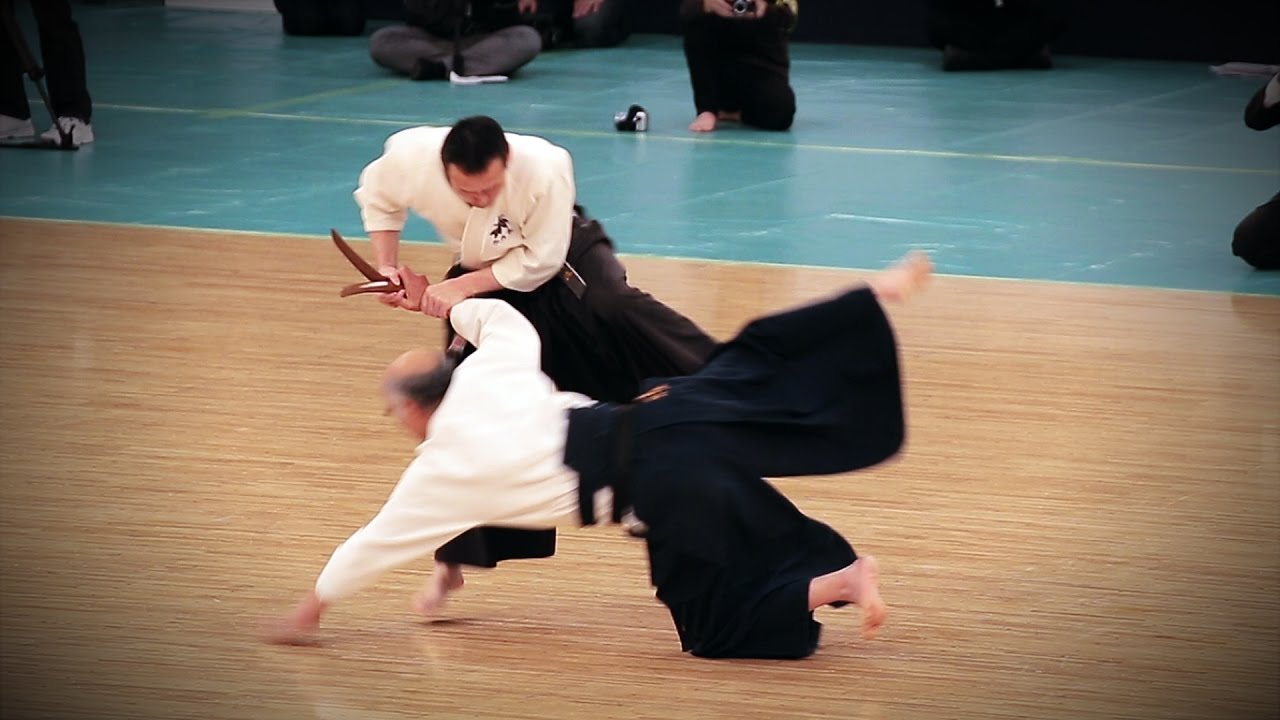
As it is not possible to discuss all of the different branches (Ryu) of Jujitsu, this writing will mention a few of those, which are generally considered to the most significant developments in the art. The oldest Jujitsu movement is the Takenouchi-Ryu, purported to have been originated by Takenouchi Hisamori, a native of Sakushu, in the year of 1532. This branch taught Kogusoku, or the art of seizing, which is somewhat different from the pure art of Jujitsu. The Takenouchi-Ryu may be regarded as the primal system for the teaching of arts similar to Jujitsu. Fukuno Schichiroemon of Temba originated a second system called the Kito-Ryu. This Ryu `appeared in the middle of the seventeenth century. Prominence of the "Art of Throwing" (Nage-waza) and "Form Practice (Kata) gave the Kito-Ryu great prestige and popularity. In close connection with this branch was a third branch called the Jikishin-Ryu, whose founder was Terada Kanemon, a native of Unsho, and the contemporary of Fukono. Both Fukuno and Terada lived about the middle of the seventeenth century in somewhat close relationship to each other. They established two separate systems of Jujitsu some years before the time of Chin Genpin. These two systems appear to be the oldest of all the varied systems of Jujitsu.
Inugami Nagakatsu of Omi founded the Kiushin-Ryu. The date of its founding is uncertain, and there are some reasons to believe that this branch was derived from the Kito-Ryu. Inugami Genpin, the grandson of the founder, attained such eminence through his skill at the Kiushin-Ryu that he came to be regarded as the founder of the school. The Sakiguchi-Ryu, Founded by Shinbukawa Bangoro, are two other well-known Ryu of Jujitsu. The Yoshin-Ryu, or the Miura-Ryu, and the Tenjin-Ryu were also prominent systems.
The Yoshin system, founded by Yoshin Miura, taught that many illnesses were the result of a disproportionate use of mind and body. Miura devised several Jujitsu methods involving "arresting devices". After a lengthy study with two of his disciples, he developed fifty-one arresting methods, His students, following his death, established systems of their own, further expanding his teachings.
The Tenjin-Shinyo-Ryu was founded by Matayemon Iso, a student of the Yoshin-Ryu. After several years of studying, Iso set out to tour the country and, at the same time, test his ability. Every where he traveled he competed with renowned masters in Jujitsu tournaments. His proficiency was such that he never lost a contest.
The branches of Jujitsu grew during the feudal period, particularly during the time of Iyemitsu, the third and ablest of the Tokugawa Shogun, under whose government feudalism was completely established in Japan. The art of Jujitsu continued in various provinces in Japan until the later part of the eighteenth century, when it began to decline with the impending fall of feudalism. Later, Jujitsu fell into disuse with the abolition of the feudal system (1860-1865) and became almost extinct
.
History of JuJitsu, Part II
by Dennis Helm, Godan.
THE FOUNDING OF KODOKAN JUDO
At the turn of the seventeenth century, Japan was in disorder and disunion. Three able generals successfully subdued the other warlords. The Tokugawa clan obtained supremacy and assumed the Shogunate. A strict hierarchical social order was imposed in which the descending scale ran from the warriors down through the peasants, artisans to the merchants at the bottom. The Shogunate put tax collecting and its finances in order, administered careful control of the population, and generally executed a viable dictatorship. This may well have been the world's most ambitious effort to make time stand still. The Tokugawa rulers brought a reasonable degree of order and unity to Japan for almost two hundred years.
During the time of the Tokugawa regime, the role of the emperor was emphasized as the focal point of Japanese life, even though he was living in genteel poverty in his secluded Kyoto court. Shogun and commoner alike ignored him.
In 1573 Oda Nobunaga became Shogun and for nine years gained control of all most all of Japan. Nobunaga was assassinated in 1582 and the commoner Toyotomi Hideyoshi took over of the government and continued to unify the country. He ruthlessly put down any traces of insurrection and revived the old gulf between the warriors - the samurai – and the commoners by introducing restrictions on wearing the long sword. The long sword was restricted to the samurai class.
In 1603 Tokugawa Leyasu became Shogun and was determined to ensure his family’s control of the government. The Tokugawa period brings great change to the social history of Japan. The bureaucracy of the Tokugawas was all-pervading. Not only were education, law, government and class controlled, but also even the dress and behavior of each class was dictated. The traditional class-consciousness of Japan hardened into a rigid class structure.
With the death of the shogun Tokagawa Semochi, in August 1866, new struggles began to determine his replacement. Emperor Komei died in February 1867, and Mutsuhito succeeded him. In November, the new Shogun, Keiki, was forced to resign, and in January 1868, the young Emperor proclaimed the Shogunate abolished. Imperial rule was restored in Japan. The abolition of the Shogunate ended 265 years of Tokugawa Family rule in Japan.
At little past two in the afternoon on the thirteenth day of the tenth month of the first year of Meiji, which was November 26, 1868, in the Gregorian calendar, the Emperor took up residence in Tokyo and thus symbolized the opening of Japan's modern era. Tokyo was established as the new imperial capital and the arrival of the Emperor there gave it legitimacy.
That the Meiji Restoration was called a restoration was not mere chance. It was not a revolution, despite the changes it brought. The men of Meiji restored the Emperor to his ancient place at the center of Japanese life and restored to Japan the sense of national unity he represented. They renewed the vitality of existing Japanese institutions and added new ones. The Restoration was engineered by the upper class and it continued to be controlled from above with changes filtering down from the top.
The Imperial ordinance, prohibiting the samurai class from wearing swords in 1871, dealt a terrible blow to martial arts. The art of Jujitsu was no exception. The MILITARY CONSCRIPTION ORDINANCE OF 1872 established an army and a navy requiring all males who reached the age of twenty irrespective of class to register for military service, and to be ready for all emergencies. In the conscript army, the ordinary citizen was raised to the level of the samurai and was imbued with the Japanese warrior's code.
The Imperial Rescript For Soldiers and Sailors, a clearly Confucian document drafted in 1882, admonished them "to consider loyalty their essential duty, "to have "sound discrimination of right and righteousness, and to "make simplicity their aim". It was during this era that the founder of Kodokan Judo, Jigoro Kano (1860-1938), appeared. He was born in Makagemachi of Hyogo Prefecture, which is the current Kobe and came up to Tokyo in 1871 at the age of ten. Master Kano showed great promise in his academic pursuits. From the time of his arrival in Tokyo he attended private school where he pursued classical studies as well as yogaku, or western learning. 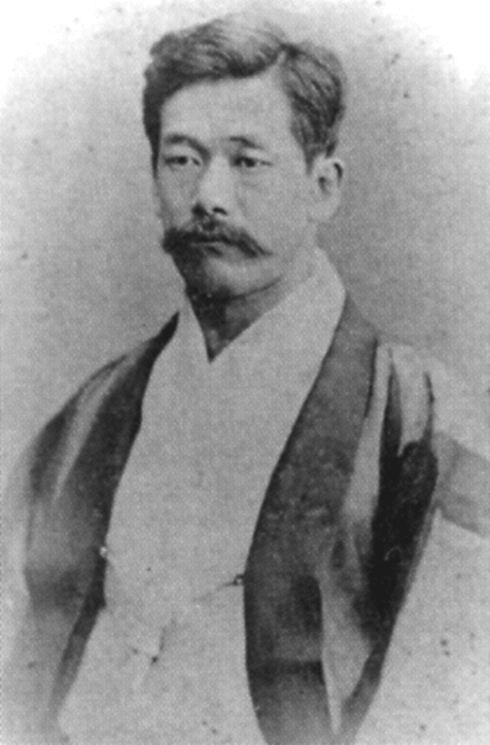
He was physically frail in his early youth and the thought of making himself stronger never left his mind. Kano learned that through the art of Jujitsu a person of slight build could throw or subdue a larger and more powerful opponent.
Master Kano decided to train in the art of Jujitsu and possibly make himself physically fit. During 1877, while attending the Imperial University in Tokyo, Kano found Hachinosuke Fukuda, the Master of the Tenjin Shinyo-Ryu. Kano promptly enrolled with Fukuda as a pupil. After attending classes during the day at the university, Kano could be found at the dojo practicing kata and randori. Due to his enthusiasm and effort he surpassed the senior pupils and became a ranking member of the dojo, with the title of Shihan-Dal, meaning, "representing the Master". The techniques of this Ryu of Jujitsu, such as atemi-waza, shime-waza, and hodaku, were superior in many technical aspects to other Ryu. They contributed much to broaden Kano's scope of the art. In 1879, with the untimely death of Fukuda, Kano entered the school of Masammoto Iso, which was the main branch of the same Tenjin Shinyo-Ryu.
Here Kano continued his efforts to master the art of Jujitsu. During 1881, Master Iso passed away and Kano turned to an entirely new Jujitsu Ryu, the Kito-Ryu, where he was able to continue his training under the guidance of Konen likubo. When 22-year-old Kano took nine of his private students from the dojo of his master likubo in February 1882, and set up his own dojo, Judo didn't automatically spring into being. In fact master likubo came two or three times a week to help Kano's students. They were still learning Jujitsu rather than Kodokan Judo. Possibly Kodokan Judo came into being the day that Kano first defeated likubo. Until then Kano never had been able to throw him. That day in randori (free practice), Kano blocked every move likubo made, then applied two of his techniques - ukewaza and sumiotoshi - to throw the Jujitsu master no less than three times.
Kano explained: "Force your opponent to make his body rigid and lose his balance, and when he is helpless, you attack". Upon hearing this, likubo replied: "Your skill in randori surpasses me, so we will discontinue the practice sessions, but you alone should continue to study and perfect the randori techniques. However, your kata form needs further improving so in this area I will give you instruction.
The Tenjin Shinyo-Ryu, which Kano first studied, was especially known for atemi-waza and katame-waza, while the Kito-Ryu excelled in nage-waza techniques. Therefore, Master Kano was able to grasp the wide spectrum of Jujitsu, including its philosophy. The three Jujitsu Masters from whom Kano received tutelage were all foremost leaders in their respective Ryu and were also considered distinguished Grand Masters of the whole art of Jujitsu. Kano received further instruction from many other masters representing other Ryu. Jujitsu originally was not an application of consistent principles of science but simply a group of methods of attack and defense devised by different masters, one Ryu representing a group of methods devised by one master, and other Ryu representing the devices of others. This being the case there was no fundamental principle by which the validity of the various methods could be tested.
Techniques from a Tenjin Shinyo Ryu training manual.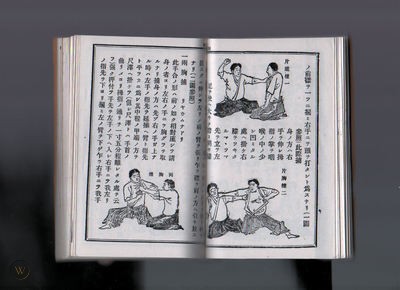
At this time, there seems to have been a significant growth in Kano's systematic development. This is the point where his personal philosophy coalesced into a coherent ideal. Kano having seriously studied Jujitsu came to conceive of one all pervading principle by which the various techniques could be evaluated, which was: Whatever be the object, it can best be achieved by the highest or the maximum efficient use of mental and physical energy directed to that purpose or aim". Going back into Japanese history, Kano studied all of the methods of attack and defense taught by different masters. He found that there were many methods which could stand his test, while others could not.
Preserving those which he deemed valid, and adding many other techniques of his own device which he felt confident could stand the test, he organized his own system of attack and defense in 1882. "JUDO" was the name of the principle together with its application, whereas Jujitsu was the name for a group of different devices not founded on such a principle. Kano named the institution where this principle was studied and its application taught, the KODOKAN, which literally means "an institution for studying the way". Inasmuch as the name Judo was used 250 years before Kano was born by the Jikishin-Ryu, it is necessary to qualify Kano's as Kodokan Judo.
When Kano was graduated from the Imperial University in 1881, he also had accomplished his primary aim, which was to make himself physically fit. Realizing that Jujitsu training could make an important contribution to everyday life, he decided that such profound benefits should not stop with himself but should be promoted widely among young people and carried on to future generations.
Kano taught in the government school, which educated the children of the House of Peers. The Emperor’s son also attended this school. Kano later filled the post of Director of the Bureau of Primary and Secondary Education in Japan, and for twenty-four years served as the Principal of the Higher Normal College in Tokyo. Through teaching Kodokan Judo to the future teachers of Japan, Judo was introduced into the curriculum of the school children of Japan. Kano was thus able to propagate his art. Judo was almost immediately recognized, as a national exercise and Kano's method of teaching became a widely accepted instructional technique.
The true genius of Kano's Kodokan Judo is found in the leg movements, which had no counterpart in previous Japanese Jujitsu systems. While Kano was studying at the Tenjin Shinyo-Ryu he also studied European wrestling and Japanese sumo systems and combined elements of each to allow his 105 pound body to throw a burly 170 pounder by the name of Fukushima, who took great delight in smashing him about the mat. The Technique Kano used is now known as Kataguruma, or shoulder wheel. While keeping balance on a focal hip point, he soon developed a strong goshi, or hip technique. A brilliant invention of Kano's was the development of one-legged techniques.
In the past, Jujitsu techniques had been designed for action against men in armor and were greatly restricted. The older Jujitsu techniques were not designed to be used against a person in street clothes. The concept of off balancing one's opponent and using one's body in an efficient manner was also a new concept to martial arts. Kano started Kodokan Judo in 1882, at the Eishoji Temple. In his attempt to develop a workable sport out of the great number of Jujitsu techniques, Kano ran into trouble, because many people felt that those remnants of an obsolete political-social system would be best forgotten. Even though Kano was a modernist, he felt that the old knowledge, where applicable, should be refined and not destroyed.
Kodokan Judo became the focus of criticism from Jujitsu experts, especially from Hikosuke Totsuka, who was the most influential Jujitsu expert with a great number of followers. The other Jujitsu systems were suspicious of the practical merits of Judo in combat. Between the Kodokan Judo and other Jujitsu Ryu there developed a keen rivalry, especially between the Totsuka-Ryu and the Kodokan. In 1886, under the auspices of the Tokyo Metropolitan Police Board, a tournament between the two opposing groups was held to decide the supremacy of the two forms of Japanese self-defense. In the tournament, ten highly selected Kodokan experts competed, including the "Great Four" of the Kodokan: Tsunejior Tomita, Sakujiro Yokoyama, Yoshiaki Yamashita (who later went to the United States and taught Judo to Presideht Theodore Roosevelt), and Shiro Saigo.
Through the early years when Judo was developing at the expense of Jujitsu, Kano rose in the education field. He lectured at various schools and colleges and was appointed Principal of the Tokyo Higher Normal School. In 1889, he traveled to Europe for the first time as attach to the Ministry of the Imperial Household, and represented the Ministry of National Education in China in 1902 and again in 1905. With such a fast rise in the demanding field of government service, it is amazing that he was able to spend any time on Judo. During his lifetime Kano developed a reputation as a scholar and spoke excellent English. At one time he gave a lecture at the University of Southern California in his major field, which was Japanese literature. Along with everything else, Kano had a great organizational talent. He built a nucleus of first rate judoka around himself, and exhorted the other Jujitsu masters to adopt his methods. By a firm but gracious example he saw the Kodokan Judo movement flourish. His idea of education involved not only teaching but setting a good example as well. His first students, mainly Yamashita, lsogai, Yokoyama, Saigo, Suzuki, Nagaoka, Mifune, and Tomita emulated him and carried his teaching and example throughout Japan.
